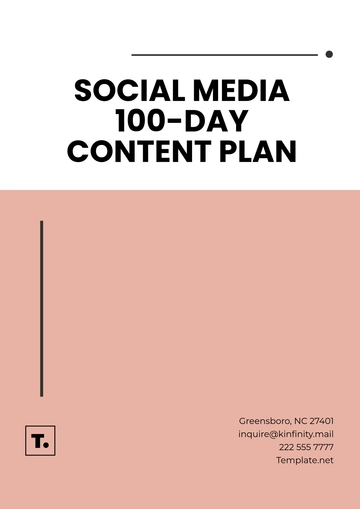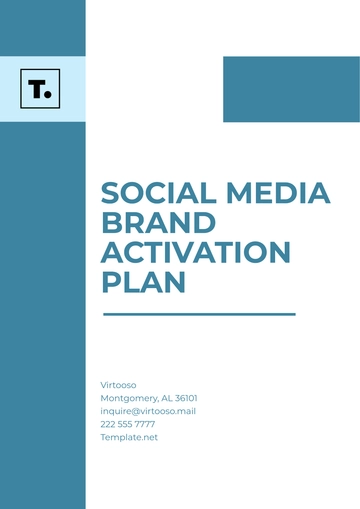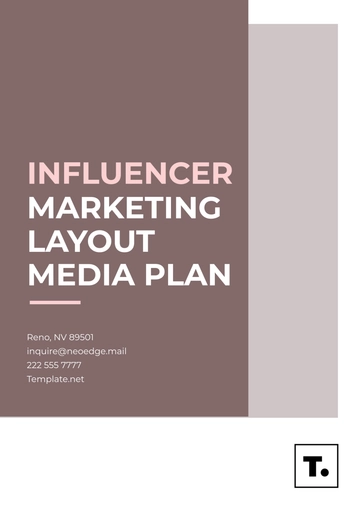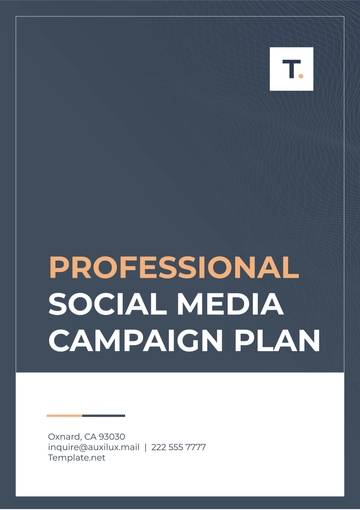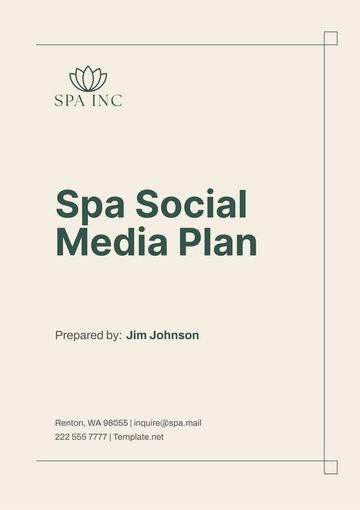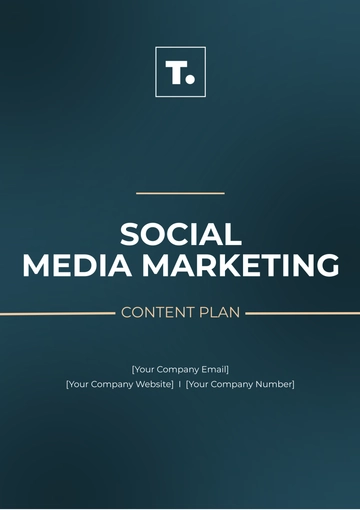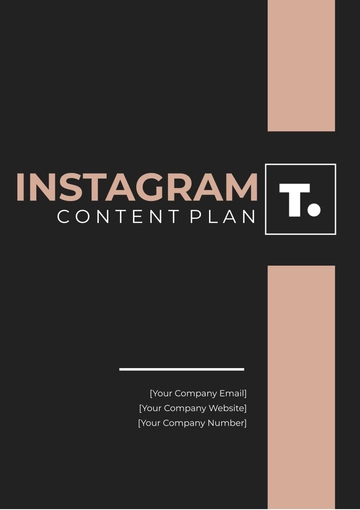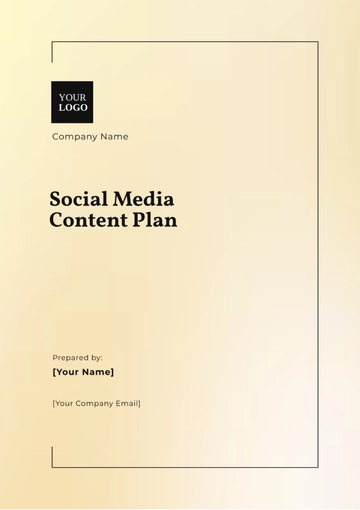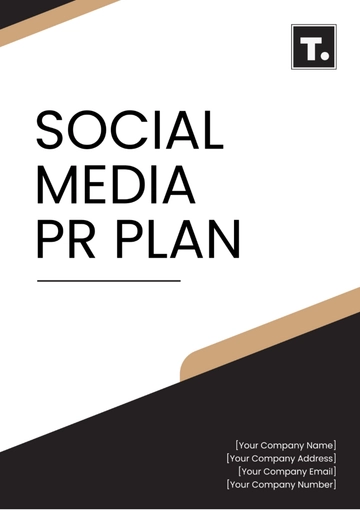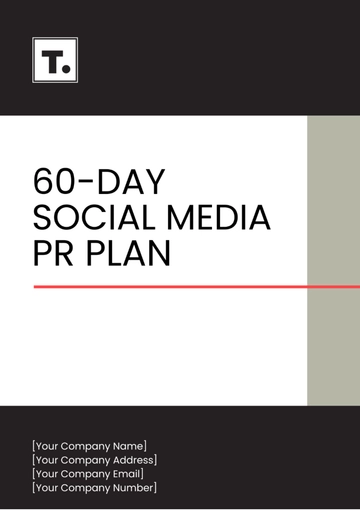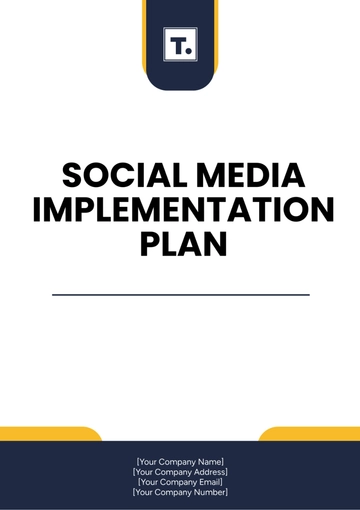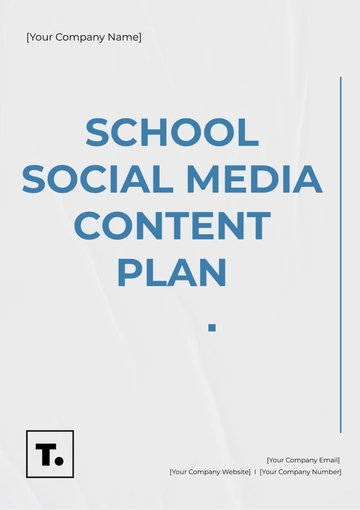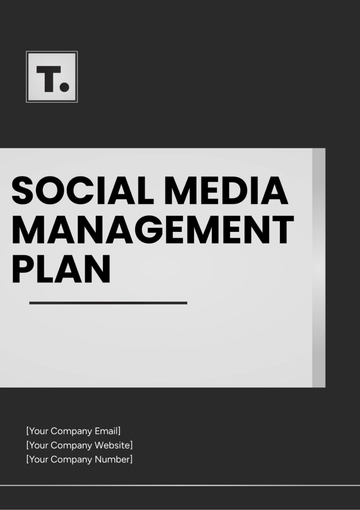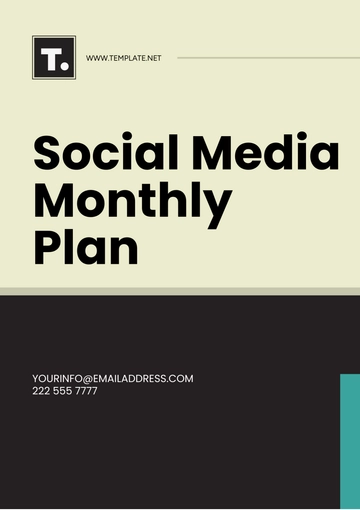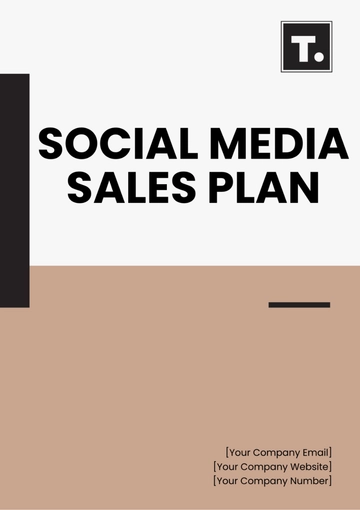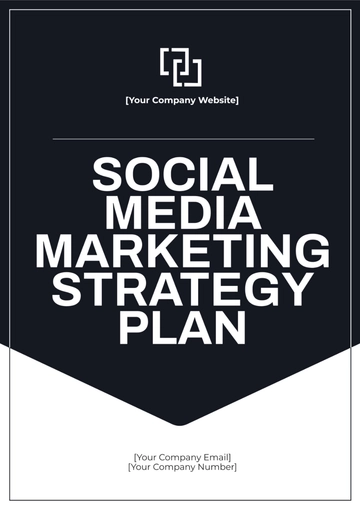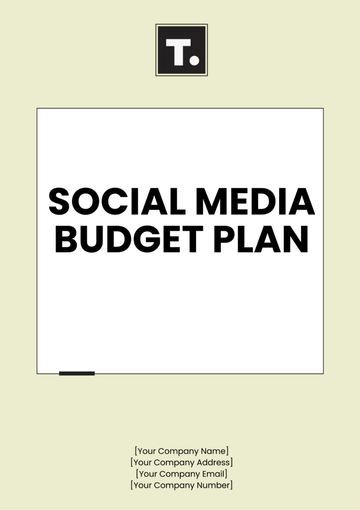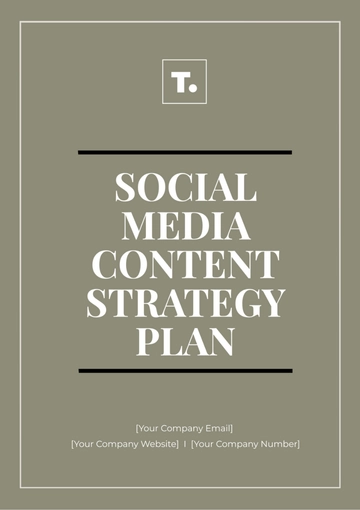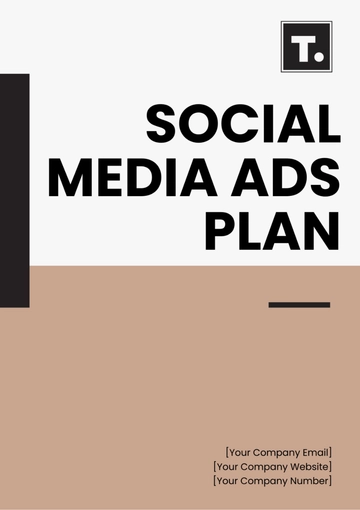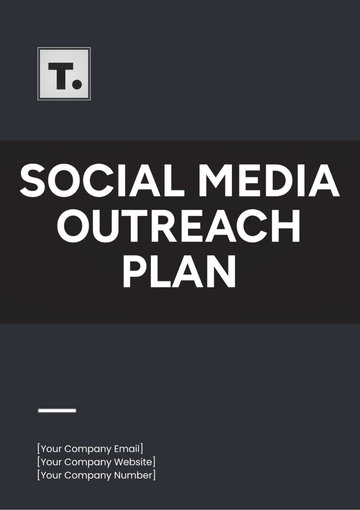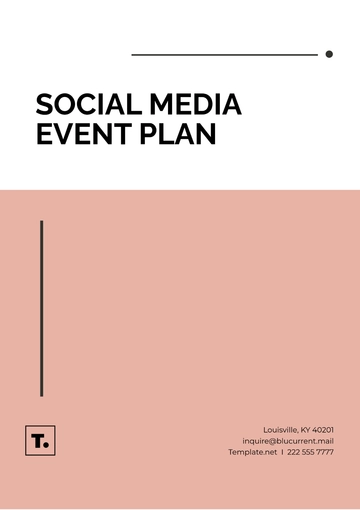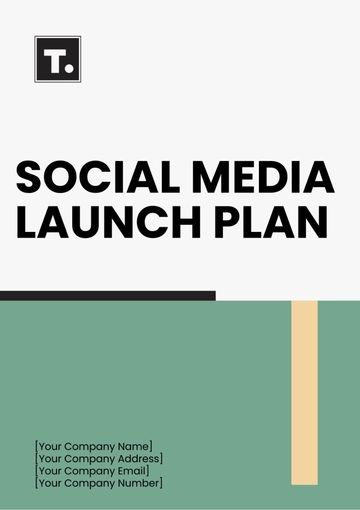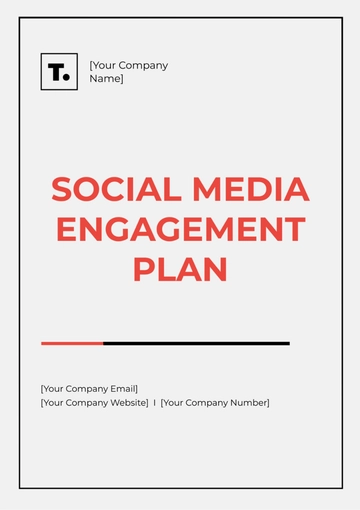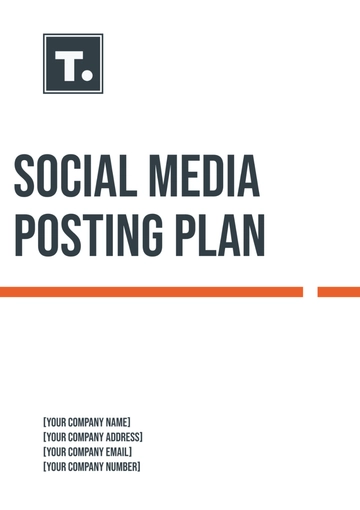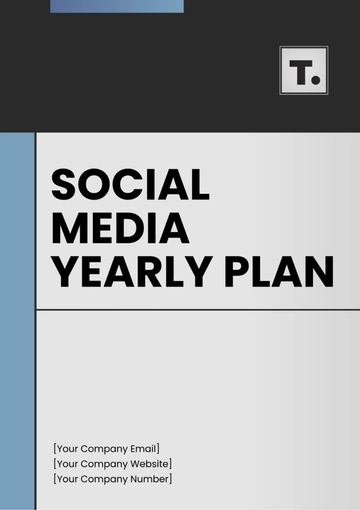Free Influencer Marketing Layout Media Plan
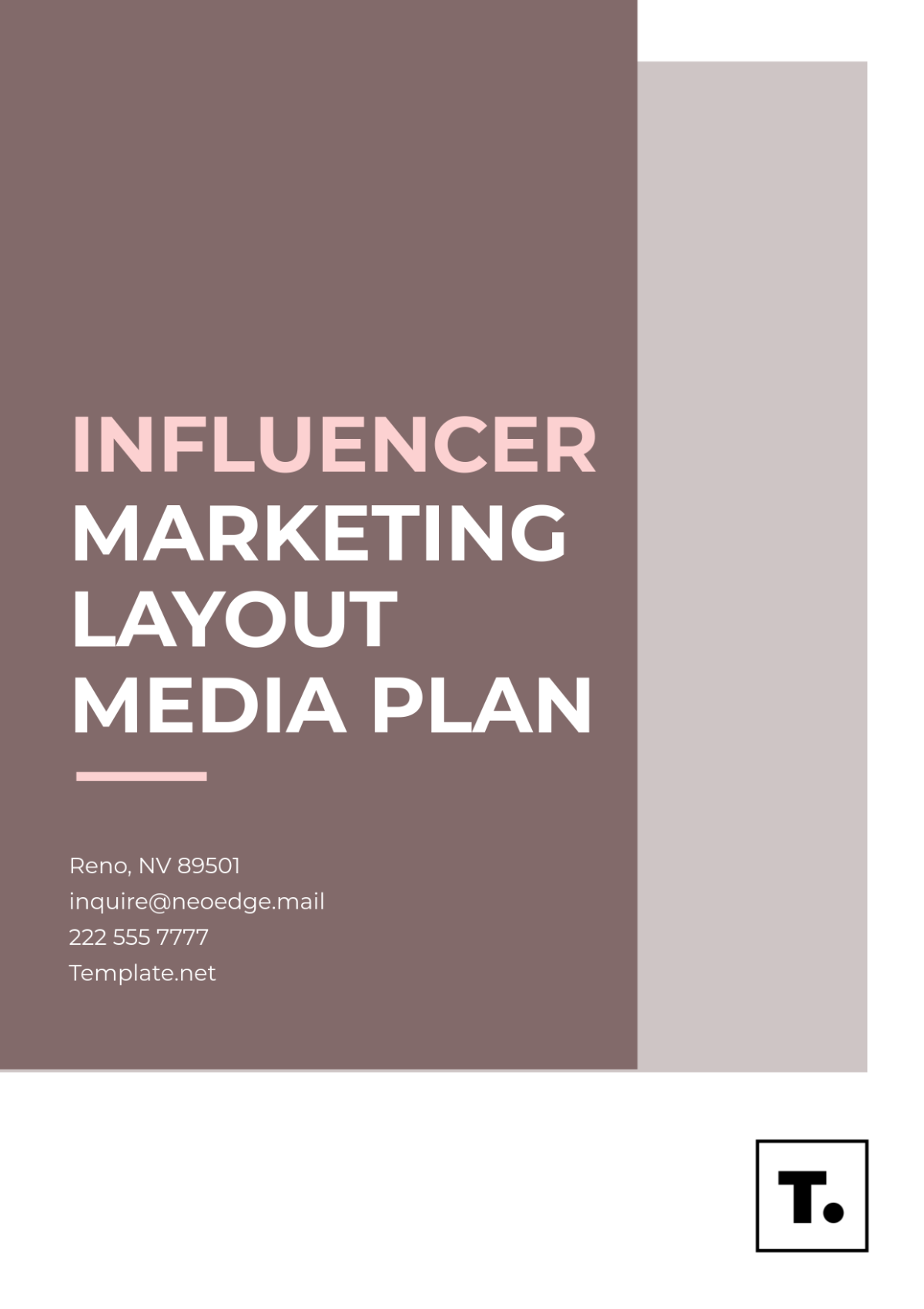
Prepared by:
[YOUR NAME]
[YOUR COMPANY NAME]
1. Campaign Overview
This section provides an overview of the campaign’s objectives, messaging, and target audience.
Objective
Increase brand awareness for [YOUR COMPANY NAME], a sustainable fashion brand.
Drive traffic to the brand’s website and increase sales of the recycled collection.
Promote the brand’s commitment to sustainability and eco-friendly practices.
Campaign Message
Highlight the eco-friendly nature of the recycled collection.
Emphasize the durability, comfort, and stylish designs of the products made from recycled materials.
Call to action: “Shop the Recycled Collection now and join the sustainability movement!”
Target Audience
Demographics: Ages 18–35, Gender: Primarily Female, Location: United States, Canada, UK, Australia
Interests: Sustainable fashion, eco-conscious lifestyle, fitness, wellness, and outdoor activities.
Psychographics: Individuals passionate about sustainability and ethical consumption. Fashion-forward consumers looking for eco-friendly alternatives.
2. Influencer Selection
This section outlines the types of influencers to target and the criteria for selection.
Influencer Criteria
Follower Count: 50k-500k for micro and mid-tier influencers
Engagement Rate: Minimum of 3% engagement (likes, comments, shares)
Platform: Instagram, YouTube, and TikTok
Content-Type: Lifestyle photos, product reviews, tutorials, unboxing, and styling tips
Niche: Sustainable fashion, eco-living, fitness, and wellness influencers
Potential Influencers
Influencer | Platform | Followers/Subscribers | Engagement Rate |
|---|---|---|---|
Dahlia White | 350k followers | 5% | |
Adrienne Daniel | YouTube | 180k subscribers | 4.5% |
Sophie Fadel | TikTok | 250k followers | 6% |
3. Content Strategy
This section defines the type of content to be produced, including messaging, style, and format.
Content Types
Instagram Posts: High-quality photos showcasing the Recycled Collection in daily settings (outdoor, casual wear, etc.).
Stories/Reels: Short-form videos showing behind-the-scenes looks at the design process or how the products are made from recycled materials.
YouTube Videos: Full-length product reviews, sustainable fashion hauls, and styling tips for eco-friendly looks.
TikTok Challenges: Fun, interactive videos showcasing the versatility and comfort of the products through trendy challenges.
Brand Guidelines
The tone of Voice: Friendly, inspirational, and genuine. The voice should reflect the brand's commitment to sustainability.
Visual Style: Natural, light-filled, clean, and authentic. Focus on showing the product in real-life scenarios.
Hashtags: #SustainableStyle #RecycledFashion #RecycledCollection #GreenFashion
Tagging: Tag the brand on Instagram, YouTube, and TikTok.
Key Messaging
“Recycled Collection: Fashion with a Conscience.”
“Join the sustainability movement with stylish and eco-friendly pieces.”
Call to action: “Shop Now and get 15% off with code SUSTAINABILITY15.”
4. Campaign Timeline
A detailed timeline that outlines the stages of the campaign.
Phase | Week | Activities |
|---|---|---|
Pre-launch Phase | Week 1 - Week 2 | Confirm influencers, finalize contracts, brief on goals, plan content calendar, share product details, and establish guidelines. |
Launch Phase | Week 3 - Week 4 | Influencers post initial content (unboxing, first impressions) and share reviews and styling tutorials. |
Post-launch Phase | Week 5 - Week 6 | Monitor content, repost top-performing content, analyze results, and evaluate influencer performance. |
5. Budget Allocation
This section outlines the budget for the campaign and the distribution of funds across various activities.
Category | Budget Allocation | Details |
|---|---|---|
Influencer Fees | $20,000 | Payment per post/story/video (10 influencers at $2,000 each) |
Content Creation | $5,000 | High-quality photography/videography for product shots |
Platform Ads | $10,000 | Paid ads on Instagram, YouTube, TikTok to amplify reach |
Campaign Management | $5,000 | Agency/manager fees for overseeing campaign execution |
Miscellaneous | $2,000 | Shipping, product samples, packaging, etc. |
Total Budget | $42,000 |
6. Metrics & KPIs
This section defines the performance metrics and KPIs that will be used to measure the success of the campaign.
Key Performance Indicators (KPIs)
Impressions: Aim for at least 5 million total impressions across all influencers.
Engagement Rate: Track engagement rates (likes, comments, shares) to achieve 3-5% per post.
Traffic: Goal of 30% increase in website visits from influencer links.
Conversions: Target 500 sales through affiliate links or promo codes.
Brand Sentiment: Positive sentiment analysis from comments and influencer reviews.
Tracking Tools
Google Analytics: For website traffic analysis.
Influencer Marketing Platform: For tracking influencer content performance and engagement (e.g., Grin, HypeAuditor).
Social Media Insights: Built-in analytics from Instagram, YouTube, and TikTok.
7. Legal & Contractual Terms
This section covers any legal considerations and contracts needed for influencer partnerships.
Contract Terms
Payment Structure: Influencers will be paid per post (upfront payment) or after campaign completion.
Usage Rights: Content can be repurposed for [YOUR COMPANY NAME]'s website, social media, and paid ads.
Exclusivity: Influencers cannot promote competing eco-fashion brands during the campaign.
Content Approval: Influencer content must be submitted for approval before posting.
8. Reporting & Evaluation
This section outlines how the campaign's success will be evaluated and reported.
Reporting Schedule
Weekly Updates: The campaign manager will send a report of influencer activity, engagement, and initial performance.
Final Report: After campaign completion, a comprehensive report will evaluate key metrics (ROI, conversions, engagement, brand sentiment).
Performance Evaluation
ROI: Determine if the campaign resulted in a positive return on investment by comparing the revenue from sales to the campaign spend.
Influencer Performance: Analyze which influencers delivered the best results in terms of engagement, traffic, and conversions.
- 100% Customizable, free editor
- Access 1 Million+ Templates, photo’s & graphics
- Download or share as a template
- Click and replace photos, graphics, text, backgrounds
- Resize, crop, AI write & more
- Access advanced editor
The Influencer Marketing Layout Media Plan Template from Template.net is a customizable and editable tool designed for your influencer marketing campaigns. Easily adjust the layout to fit your strategy and goals. Fully editable in our Ai Editor Tool, this template allows you to create a tailored, professional media plan for impactful influencer collaborations.
You may also like
- Finance Plan
- Construction Plan
- Sales Plan
- Development Plan
- Career Plan
- Budget Plan
- HR Plan
- Education Plan
- Transition Plan
- Work Plan
- Training Plan
- Communication Plan
- Operation Plan
- Health And Safety Plan
- Strategy Plan
- Professional Development Plan
- Advertising Plan
- Risk Management Plan
- Restaurant Plan
- School Plan
- Nursing Home Patient Care Plan
- Nursing Care Plan
- Plan Event
- Startup Plan
- Social Media Plan
- Staffing Plan
- Annual Plan
- Content Plan
- Payment Plan
- Implementation Plan
- Hotel Plan
- Workout Plan
- Accounting Plan
- Campaign Plan
- Essay Plan
- 30 60 90 Day Plan
- Research Plan
- Recruitment Plan
- 90 Day Plan
- Quarterly Plan
- Emergency Plan
- 5 Year Plan
- Gym Plan
- Personal Plan
- IT and Software Plan
- Treatment Plan
- Real Estate Plan
- Law Firm Plan
- Healthcare Plan
- Improvement Plan
- Media Plan
- 5 Year Business Plan
- Learning Plan
- Marketing Campaign Plan
- Travel Agency Plan
- Cleaning Services Plan
- Interior Design Plan
- Performance Plan
- PR Plan
- Birth Plan
- Life Plan
- SEO Plan
- Disaster Recovery Plan
- Continuity Plan
- Launch Plan
- Legal Plan
- Behavior Plan
- Performance Improvement Plan
- Salon Plan
- Security Plan
- Security Management Plan
- Employee Development Plan
- Quality Plan
- Service Improvement Plan
- Growth Plan
- Incident Response Plan
- Basketball Plan
- Emergency Action Plan
- Product Launch Plan
- Spa Plan
- Employee Training Plan
- Data Analysis Plan
- Employee Action Plan
- Territory Plan
- Audit Plan
- Classroom Plan
- Activity Plan
- Parenting Plan
- Care Plan
- Project Execution Plan
- Exercise Plan
- Internship Plan
- Software Development Plan
- Continuous Improvement Plan
- Leave Plan
- 90 Day Sales Plan
- Advertising Agency Plan
- Employee Transition Plan
- Smart Action Plan
- Workplace Safety Plan
- Behavior Change Plan
- Contingency Plan
- Continuity of Operations Plan
- Health Plan
- Quality Control Plan
- Self Plan
- Sports Development Plan
- Change Management Plan
- Ecommerce Plan
- Personal Financial Plan
- Process Improvement Plan
- 30-60-90 Day Sales Plan
- Crisis Management Plan
- Engagement Plan
- Execution Plan
- Pandemic Plan
- Quality Assurance Plan
- Service Continuity Plan
- Agile Project Plan
- Fundraising Plan
- Job Transition Plan
- Asset Maintenance Plan
- Maintenance Plan
- Software Test Plan
- Staff Training and Development Plan
- 3 Year Plan
- Brand Activation Plan
- Release Plan
- Resource Plan
- Risk Mitigation Plan
- Teacher Plan
- 30 60 90 Day Plan for New Manager
- Food Safety Plan
- Food Truck Plan
- Hiring Plan
- Quality Management Plan
- Wellness Plan
- Behavior Intervention Plan
- Bonus Plan
- Investment Plan
- Maternity Leave Plan
- Pandemic Response Plan
- Succession Planning
- Coaching Plan
- Configuration Management Plan
- Remote Work Plan
- Self Care Plan
- Teaching Plan
- 100-Day Plan
- HACCP Plan
- Student Plan
- Sustainability Plan
- 30 60 90 Day Plan for Interview
- Access Plan
- Site Specific Safety Plan
